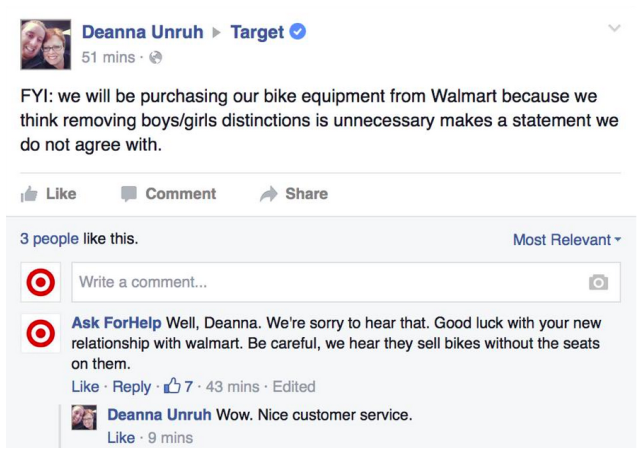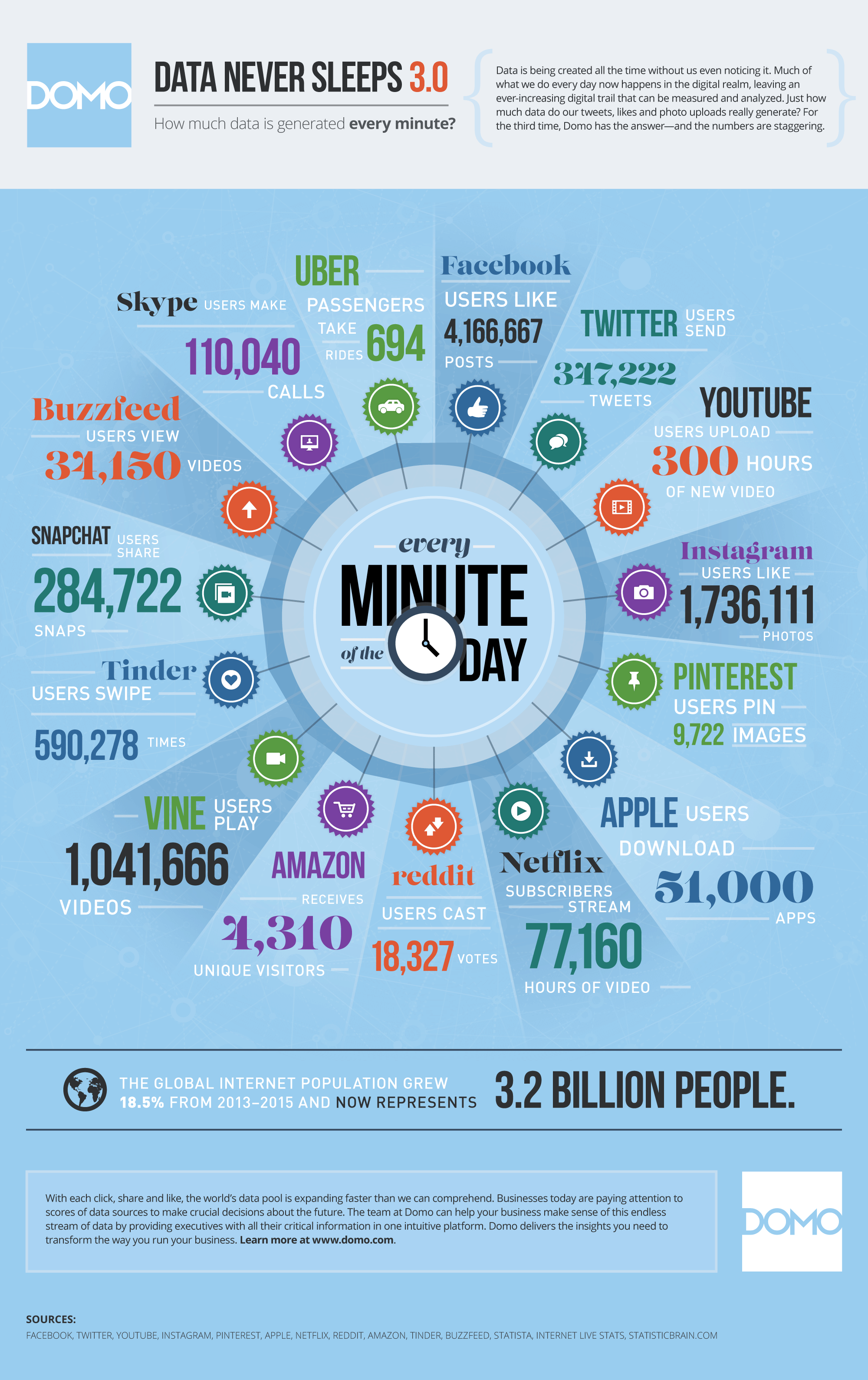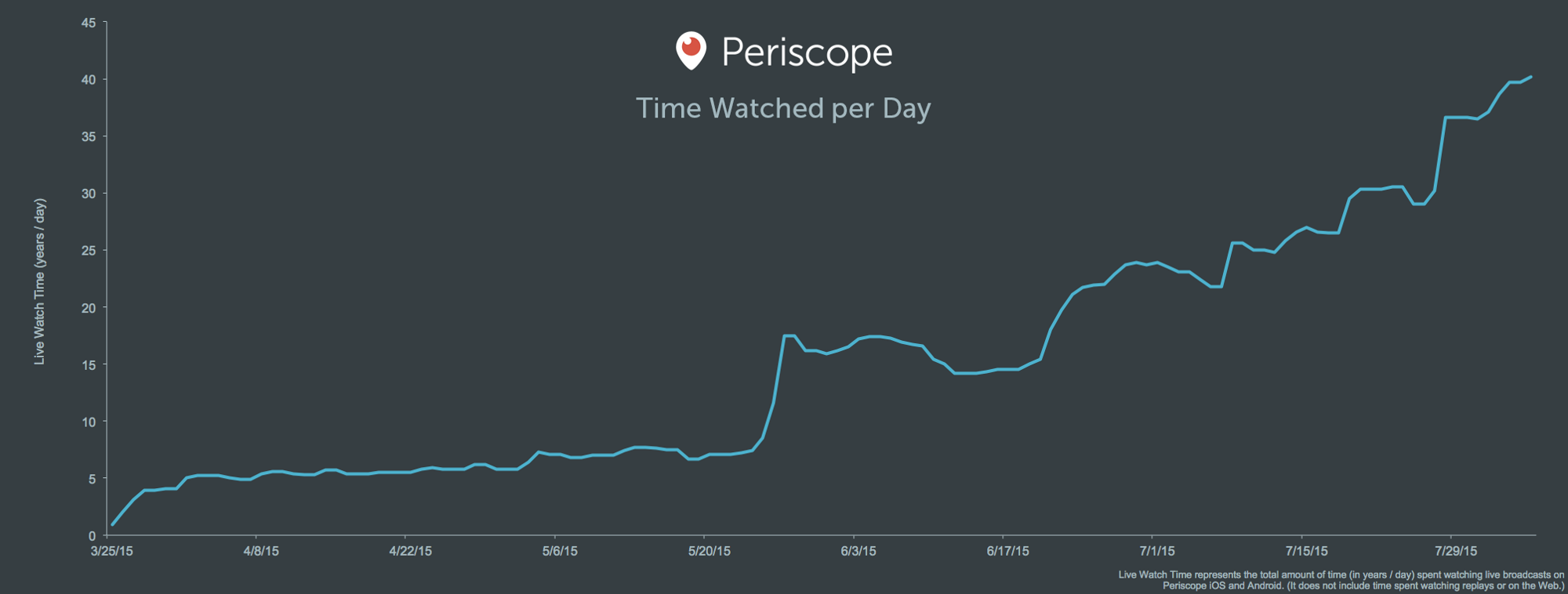The week in social: Yahoo Livetext, Twitter DM limits, and Periscope users
Facebook Audience Network debuts new ad options
Ad options previously available on the standard ads manager for Facebook have now become options on the Audience Network. The Facebook Audience Network is a way for app developers to include Facebook advertising features into their app experience, and the new options include carousel ads, dynamic product ads, and native video ads. Facebook software engineer noted that the units being brought over to the Audience Network are those that have performed very well on Facebook Newsfeed with the in-app experience.

Read more on Social Times.
Facebook improves dynamic product ads
Facebook launched dynamic product ads as a way to help marketers and advertisers reach their purchasing audience with more precision earlier this year, and several new features have just been introduced, rolling out over the next several weeks to further improve performance. Cross-sell and up-sell are the first of these features, enabling advertisers to show users related products when they have purchased something, not just after it has been placed in the cart, and this comes with the ability to define related categories with more flexibility. Additional new features include optimizing ad bids for sales versus clicks, so money is spent for the desired outcome.

Read more on Facebook Business News.
Twitter debuts full archive search
Announced on its blog earlier this week, Twitter has expanded its features for searching historical tweets through its subsidiary company Gnip, to allow users to search through the entire history of publicly indexed tweets, over nine years worth of content. Twitter ran a closed beta with a number of partners including BrandWatch, Sprout Social, Social Bro, Pulsar, and more. The features are open now to all customers of Gnip, and some of the scenarios that Twitter notes the new features would be useful for include; informing product launches, providing historical customer insights, and real-time benchmarks for Twitter advertising.
More information on Twitter Blog.
Facebook user pretends to be Target Customer Service rep on Facebook
Earlier this week, news got out of department store Target’s decision to not label toy sections by specific gender moving forward. The move prompted many Facebook users to post comments to Target’s Page agreeing or disagreeing with the sentiment. For those who disagreed, Facebook user Mike Melgaard used Target’s logo as a Facebook Page profile picture icon, and under the name “Ask ForHelp”, he posted satirical comments to said users, causing a viral movement of sharing the Page online. Melgaard was shut down after 16 hours, but not before many confused users sent snapshots of their conversations to corporate and lodged formal complains against Target for “poor customer service”.

Read more on Gizmodo.
New data shows what happens on social media in a single minute
In a new infographic from software development company Domo, it was shown what types of actions and to what scale happen online and through social media in any given minutes. Some highlights from the infographic include over 110 thousand Skype calls made, 300 hours of video uploaded on YouTube, over 1 million Vine videos looped, and over half a million swipes made on Tinder. One of the most staggering statistics shows that the global Internet population has increased by over 18 percent from 2013-2015, meaning there are now 3.2 million users connected to the Internet.

Read more on Domo.com.
Twitter removes 140 character count limit for direct messages
A much requested feature for many uses, Twitter announced this week that it would be removing the limit of 140 characters for direct message, lifting the limit to 10,000 characters. The change will take place over the course of the next several weeks, and affect users on Android, iOS, and web. Normal tweets will still be limited to 140 characters. Another feature of direct messaging that Twitter changed includes allowing any user to direct message any other, regardless of follow status.
More information on Mashable.
Snapchat introduces data saving mode
For users who have smaller data plans on their mobile devices or want to lower their overall data spend, Snapchat has introduced a new, less data-intensive mode. Called Travel Mode, users on Android and iOS can enable it, and when active, snaps and stories only load when a user clicks on them. In addition to this new mode, users can now add as many emoji as they want to individual snaps, and they can additionally export profile GIFs as a video instead of just a still image.
More information on TechCrunch.
Periscope passes 10 million users
In a blog post released earlier this week, Periscope announced that they had reached over 10 million users, approximately four months after its launch. The blog post continues to talk about how Periscope has been measuring its growth, hitting an all time high of having 45 years worth of video watched every single day, with 2 million active users everyday, 20% of its total user base. Time watched per day counts viewership on the web, a recently introduced feature that increases engagement outside of the currently existing mobile apps on Android and iOS.

Read more on Medium.
Facebook live broadcasting soon to be open to journalists and Verified Users
Facebook Mentions, the stand-alone app specifically built to let celebrities manage their Facebook interactions, will soon be available to all verified Page users, according to a statement from the company. This will include Facebook Live, the streaming service that is currently only open to celebrities but is a positioned as a live streaming function similar to Periscope and Meerkat. Although no official date has been set, it is speculated that the feature will be available before the Holidays, and there is additional speculation that Facebook Live will eventually be rolled out to all users.
More information on TechCrunch.
Yahoo Livetext messaging app now available worldwide
Yahoo’s messaging app that released last month, Livetext is now available globally for all users. The application allows users to record silent video and overlay emoji and text on top of the imagery. It is being positioned as a silent messaging app, good for school class or the workplace. Currently available on Android and iOS the app is free and has no advertising, a common tactic for new apps that are trying to build a user base quickly.
More information on International Business Times.